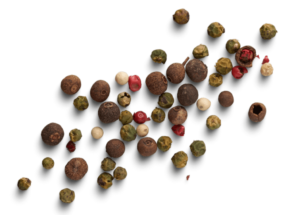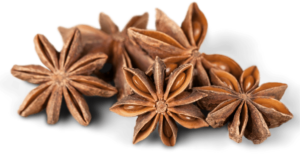
Peeling Back the Layers of Flavour Application
Let’s Sweeten the Deal
By Robert Muir
Arguably the most important part of our journey, let’s explore the flavour profile of our product.
Flavour Profile
Imagine a Strawberry flavour, what profile did you think of? Was it a fresh strawberry or strawberry milkshake? A strawberry flavoured bubble gum or strawberry jam? The idea of a “strawberry” flavour is subject to an individuals experience, the memories and exposure relating to various strawberry profiles that they have encountered. An avid golfer who regularly eats strawberry jam on his scones will have a vastly different picture of strawberry flavour than an 18 yr old who sips on strawberry dacquiris on weekends. It is extremely important have an image of what your product will taste like because there can be so many different flavour profiles.
Base Profile
There is often a taste profile associated with most bases. Tofu tends to be considered quite beany, while peanut butter is inherently nutty. The base product can influence the success of flavour application, in the examples above consideration would need to be taken when trying to mask or compliment the beany or nutty notes. Water and sugar (lollies) can be considered blank canvasses; there is no limit on which flavours will work. A very salty, yeast base would be more suited to meaty or savoury flavours and definitely should avoid fruits. Imagine a mango flavoured Vegemite, ew! A common example is vegan plant proteins which have quite earthy tasting bases. Brown (Chocolate, Vanilla, Caramel) and nutty flavours do quite well in these kinds of bases while only some fruit flavours hit the mark (sometimes Cranberry but not Strawberry).
How to Describe Flavour
Descriptive language allows use to communicate a flavour profile to someone else more accurately. We use descriptors all the time, from milk to dark chocolate, to light roast to strong coffee, we are attempting to help someone else understand what flavour profile we are after. Often, the wording used is quite basic but real success is found when more complex language is used.
If I describe a raspberry flavour as more “Jammy” than “Fresh”, I hope my colleague will understand that the raspberry profile I am after is sweeter and less acidic than a fresh raspberry. It is wise gather your own information on descriptive language of food so you can achieve the buttery, lightly salted, slightly acidic caramel toffee that you are after.
Flavour Pairing
In “Fortune Flavours the Brave” we learnt that many flavours share the same aromatic volatile group which allows us to cost effectively create natural flavours. With this knowledge we can also predict which flavours/foods will taste great when used in combination. Think about the following, supermarket available combinations below:
- Toffee Apples (caramel and apple share the chemical Furaneol)
- Almonds and Chocolate (these share the chemical 2,6-dimethylpyrazine)
- Lemon and Eucalyptus (share gamma-terpinene)
The flavour combinations above “make sense” because we have been told through trial and error that they have a pleasant taste. Look at the following combinations below that should (and often do) “make sense” based on their chemical matches:
- Pineapple and Blue Cheese (share methyl pentyl ketone)
- Kiwi and Jalapeno (share (E)-2-hexen-1-ol)
- Sour Cream and Clams (share hexanoic acid)
Give these a try if you are game, I am sure you will be surprised! Many companies are starting to understand that consumers are willing to try innovative flavour combinations, stepping away from the traditional and into the exciting.
Flavour Creations
In the mind of the consumer, taste makes or breaks the product. Your miracle shake could be 90% protein, zero carbs and have the ability to regrow limbs but if the product doesn’t taste amazing; the consumer will not seek to purchase it again. Here lies the most important aspect of product development:
Make a product that the customer will habitually consume.
Produce the amazing protein shake that gym goers reach for after their exhausting workout, not the chalky liquid that people consume while pinching their nose. Show them collagen with lovely aromas of juicy raspberries and lychee, not the powder that smells like fish mixed with fruit juice. In general, consumers are very fickle. If your product does not meet their standard, they will change to one that does. So get some flavours into your product and make it taste amazing!



